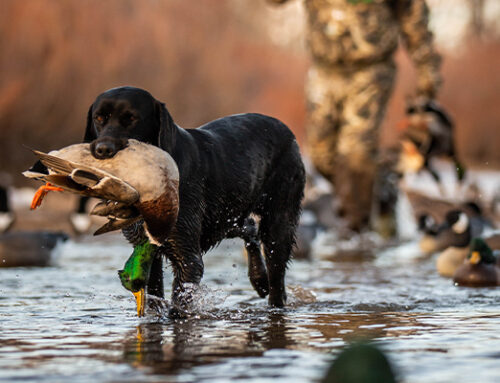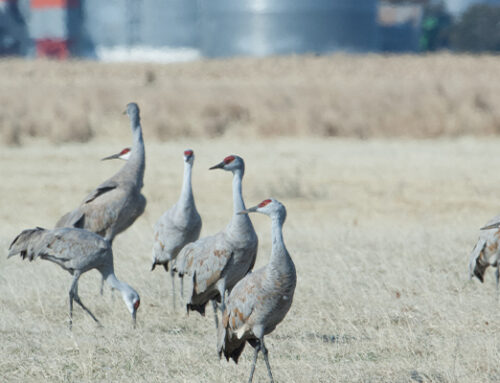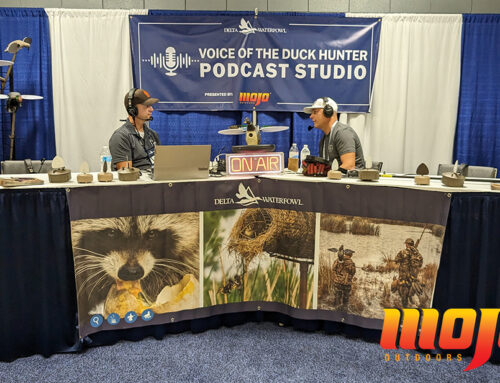Delta Waterfowl Expands Predator Management Program in 2023 to Produce More Ducks
The Duck Hunters Organization begins field work in advance of nesting season

For Immediate Release
March 17, 2023
BISMARCK, NORTH DAKOTA — Even though deep snowdrifts still blanket the northern prairie landscape where more than half of North America’s ducks nest, Delta Waterfowl has begun the organization’s annual Predator Management field work.
For the 2023 waterfowl nesting season, Delta will expand Predator Management to 31 sites: 25 in North Dakota, and three each in Manitoba and Saskatchewan. A record number of Predator Management trappers began work on March 15, helping ducks increase their nest success by removing overabundant mammalian predators such as raccoons and skunks.
Mike Buxton, senior waterfowl programs manager for Delta Waterfowl, said this winter’s near-record snowfall and expected colder weather for the next couple of weeks will hamper early Predator Management trapping efforts, but the harsh winter provides a welcome advantage for duck production this year.
“The deep snow is an issue for getting into fields and traveling down minimum-maintenance roads, but there are some areas where our trappers can start trapping,” Buxton said. “I will definitely take these conditions over not having any snow on the landscape. Once the snow melts, all of the water will be great for nesting ducks.”
As they push north, ducks and geese will arrive to a wet prairie to start the breeding season. Bismarck, North Dakota, has already received 92.8 inches of snow during the 2022-2023 winter, making it the third-snowiest winter in the past 110 years. While the prairie region of southern Manitoba and Saskatchewan is not nearing record snowfall this winter, most areas are carpeted with deep snow.
“There are some areas where trappers can get going now, such as open areas and abandoned farmsteads where raccoons and skunks live,” Buxton said. “It’ll be a slower start, but our trappers will quickly set up in new areas as the snow melts.”
Nest success — the percentage of nesting hens that hatch eggs — is the driver of continental duck populations. Biologists agree that nest success of 15 percent to 20 percent is necessary just to maintain the existing waterfowl population. In many key areas of the prairie, nest success is abysmal, often less than 5 percent.
Raccoons and skunks, duck nest predators that were uncommon or absent across much of the prairie prior to the 1950s, have become overly abundant in many areas because of changes in land use and agriculture. The effects have been devastating for ducks. Studies have shown that more than 90 percent of the failed nests are destroyed by predators.
“The altered landscape has created an imbalance between waterfowl and predators,” said Joel Brice, chief conservation officer of Delta Waterfowl. “We focus Predator Management on areas where the balance is misaligned. The result is that more ducks hatch, and more ducks fly south every fall.”
Delta Waterfowl is dramatically ramping up the organization’s efforts to produce ducks. In July 2022, Delta announced the ambitious Million Duck Campaign, a $250 million fundraising effort with a goal of adding 1 million ducks to the fall flight every year.
“We work for duck hunters,” Brice said. “Our constituents are interested in duck production, and expanding Predator Management will put more ducks into the air.”
Delta Waterfowl is The Duck Hunters Organization, a leading conservation group working to produce ducks and secure the future of waterfowl hunting in North America. Visit deltawaterfowl.org.
For more information about Delta’s proven Predator Management Program, contact Mike Buxton at mbuxton@deltawaterfowl.org or (701) 222-8857 ext. 5204.






Coon loves fig Newton cookies